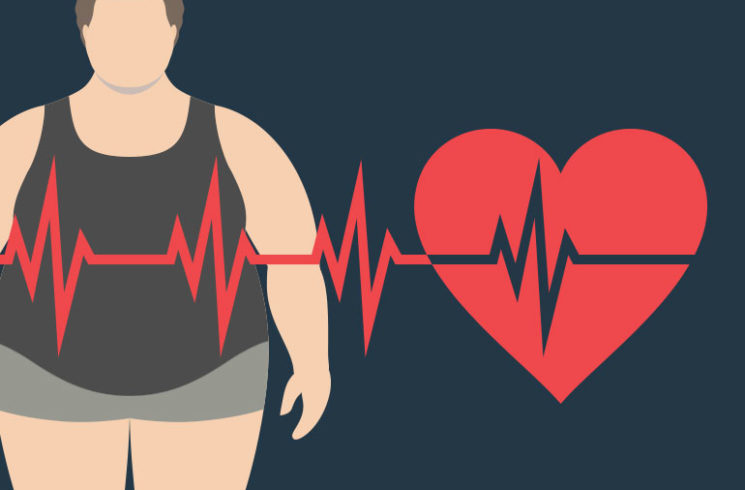

Natural selection within the human species led to a current population capable of efficiently storing fat and functioning on fewer calories. More than 70 genes specifically code for the obesity characteristic, and these are likely the result of our species’ tendency toward “survival of the fittest” leading to a greater percentage of people with those genetic tendencies. In fact, 80% of the risk of excess weight stems from genetic factors.
Each of us has over 21,000 genes, and researchers are now searching for those genes critical to the body’s cravings, storage and distribution of fat, and satiety. One of the scientific community’s current interests is FTO, an obesity- related gene that regulates appetite. The risk of obesity increases by 30% for those with one duplicate of the FTO mutation and 70% for those who have two copies.1 2
Genes play a role in both losing and gaining fat. A biological imprint mandating excess weight gain is one scientific hypothesis. When we cut back on what we eat, our bodies tend to perceive a threat of starvation (and for most of our history, cutting back on what we eat has meant exactly this).
A 2016 study showed that for the same amount of caloric intake, macronutrient intake and leisure-time physical activity, BMI was 2 points higher in 2006 than in 1988.3 This suggests we’ve gained weight not simply because our calorie intake and sedentary lifestyles have increased, but also because the ways in which calories are processed have been altered. Some researchers hypothesize that it not only matters how much we consume, but also what we consume. Perhaps, if we eliminate processed foods and grains and start eating like our ancestors, whose diets consisted mostly of protein from fish and meat, and fresh fruits and vegetables, our bodies would be trimmer, like theirs.
Healthy gut bacteria help stabilize insulin, regulate the rate at which our bodies burn calories, and our appetite. Changes in diet can help protect these important bacteria. Gut flora is noticeably different in those with obesity, and a diet high in fat and refined carbs may be what started the weight gain. 4 Another theory suggests that both what we consume and what we’re exposed to, such as stress and pollution, affects our bodies.5 Genetic influence can be subdued up to 75% by choosing a less sedentary lifestyle. Even so, it’s possible our species will begin to select “lean” genes in the next step of our theoretical evolutionary process. Future generations will determine whether obesity is a transient phenomenon or whether we’re making an adaptive and permanent shift to this shape.
If you’re diagnosed with type 2 diabetes, you’re most likely not the first in your family to have the disease. You have a 50% chance of developing type 2 diabetes if both your parents have or had type 2 diabetes. If one of your parents was diagnosed with type 2 diabetes before the age of 50, you have a 1 in 7 chance of developing the disease. If they were diagnosed after 50, you have a 1 in 13 chance.6 7
Many patients with diabetes, however, do have at least one mutation tied to the disease. But environmental and genetic risks can be a challenge to separate. Outside genetic makeup, family behaviors passed from parents to children often dictate environmental risks. For instance, if a parent has healthy eating habits, their children will likely develop them as well. T2DM develops from an environment conducive to disease and from multiple occurrences of genes associated with T2DM.8
The development of T2DM is impacted by important genetic risks, but this risk can be offset by positive environmental factors. Even so, because so many genes affect type 2 diabetes, doctors have difficulty identifying precise risk or creating preventative strategies solely from a genetic profile.
References
1 Y. Zhou, B. D. Hambly and C. S. McLachlan, "FTO associations with obesity and telomere length," Journal of Biomedical Science, vol. 24, no. 1, p. 65, 2017.
2 K. Fawcett and I. Barroso, "The genetics of obesity: FTO leads the way," Trends in Genetics, vol. 26, no. 6, p. 266-274, 2010.
3 R. E. Brown, A. M. Sharma, C. I. Ardern, P. Mirdamadi, P. Mirdamadi and J. L. Kuk, "Secular differences in the association between caloric intake, macronutrient intake, and physical activity with obesity," Obesity Research & Clinical Practice, vol. 10, no. 3, p. 243-255, 2016.
4 M. Diamant, E. E. Blaak and W. D. Vos, "Do nutrient-gut- microbiota interactions play a role in human obesity, insulin resistance and type 2 diabetes?," Obesity Reviews, vol. 12, no. 4, p. 272-281, 2011.
5 I. Moreno-Indias, F. Cardona, F. J. Tinahones and M. I. Queipo-Ortuño, "Impact of the gut microbiota on the development of obesity and type 2 diabetes mellitus," Frontiers in Microbiology, vol. 5, p. 190-190, 2014.
6 C. Busch and R. A. Hegele, "Genetic determinants of type 2 diabetes mellitus," Clinical Genetics, vol. 60, no. 4, p. 243-254, 2002.
7 V. Lyssenko, A. Jonsson, P. Almgren, N. Pulizzi, B. Isomaa, T. Tuomi, G. Berglund, D. Altshuler, P. Nilsson and L. Groop, "Clinical Risk Factors, DNA Variants, and the Development of Type 2 Diabetes," The New England Journal of Medicine, vol. 359, no. 21, p. 2220-2232, 2008.
8 I. Romao and J. Roth, "Genetic and environmental interactions in obesity and type 2 diabetes," Journal of The American Dietetic Association, vol. 108, no. 4, 2008.